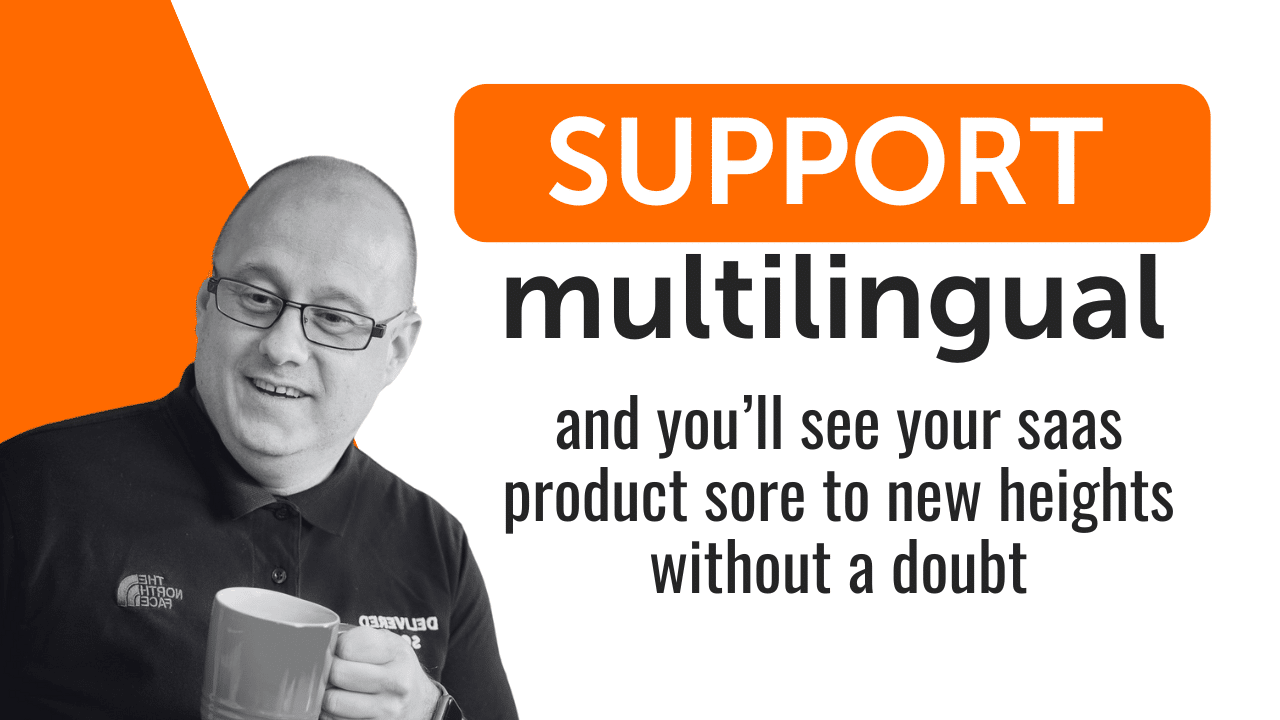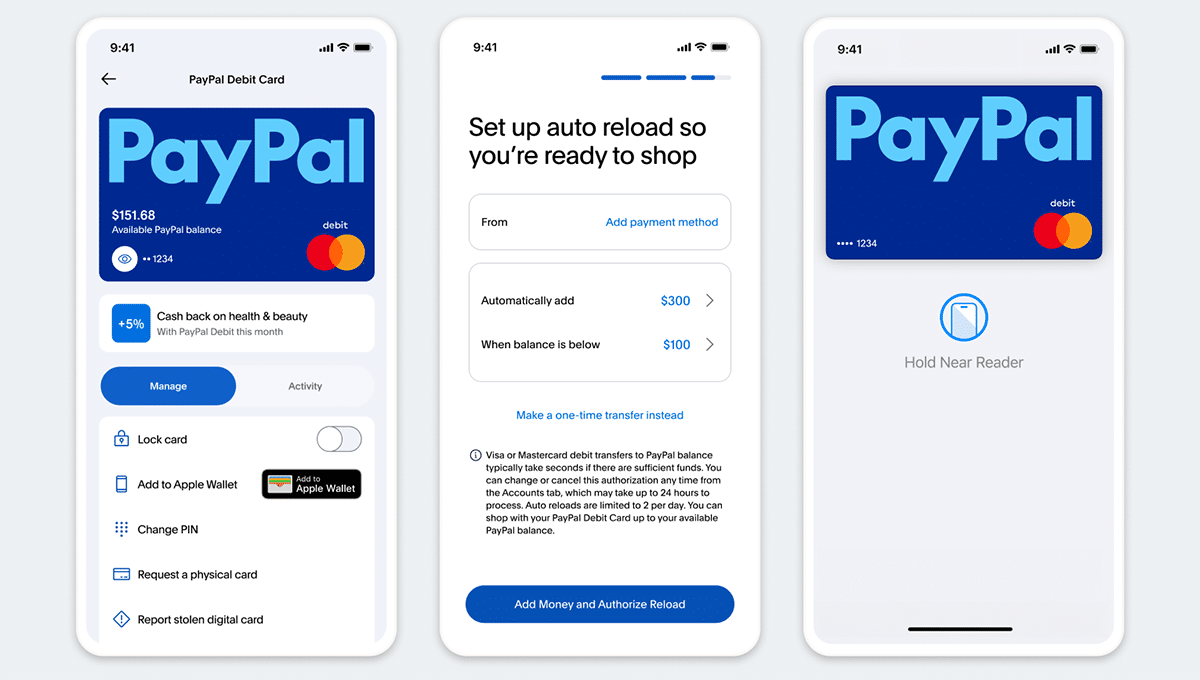
SaaS and fintech companies often focus on building new features, fixing bugs, or improving design. But one simple thing that's just as important is offering your product in more than one language.
Not everyone speaks English — and that's okay. What matters is making your product easy to understand for people wherever they are. When users can read and use your platform in their own language, they're more likely to sign up, stick around, and actually enjoy using it. In fact, 76% of people prefer buying from websites that offer content in their native language.
In this article, we'll show how adding multilingual support can help you grow faster, keep your users happy, and get better returns on what you build.
Why Multilingual Support Matters in SaaS and Fintech
Here's why offering multilingual support is important.
People Trust What They Understand
Language is tied to trust. If users can't fully understand your app or website, they won't feel comfortable signing up, especially if money is involved.
Fintech products deal with sensitive data and financial decisions. So, if someone doesn't feel 100% clear on what's happening, they'll hesitate. Offering content in their language removes that doubt and helps build confidence quickly.
In an interview, Leo Baker, Chief Technology Officer at Vendorland, said, "Helping users feel financially confident starts with language they truly understand. If someone's navigating risk, returns, or interest rates, clarity matters more than ever — especially for those just starting their financial journey."
Localised interfaces, plain-language explanations, and regional support don't just remove friction — they show respect for the user. And that, in fintech, builds long-term trust faster than almost anything else.
You Reach More People Without Changing the Product
Every new language opens up a new market. You don't need to build a new feature or redesign your product — you just make it more accessible.
For example, when PayPal expanded into new regions, they made sure their platform was available in dozens of languages.

That decision helped them grow into over 200 markets and support more than 100 currencies. Language played a huge part in that global scale.
If a global player like PayPal makes multilingual support a priority, it's clear why smaller SaaS and fintech companies should too.
Support Teams Work More Efficiently
Your customer support team deals with a mix of people, sometimes from completely different parts of the world. When users can't explain their issue clearly or don't understand the replies, support becomes slow and frustrating for everyone.
Multilingual help centres, translated chatbots, and localised templates can fix this. They cut down response times, reduce back-and-forth messages, and free up your support team to handle more complex issues.
"In the world of public records and personal verification, even small miscommunications can lead to big delays," says QuickPeopleLookup – People Search. "Multilingual support ensures users from all backgrounds can access accurate information quickly, which directly boosts trust, efficiency, and ultimately, ROI."
Less confusion, less effort, more satisfaction. In industries where details matter, that difference adds up quickly.
It Shows You're Serious About Global Growth
Companies that offer multilingual support stand out. It shows users you care about their experience, no matter where they're from. It also makes your brand look more professional, more mature, and more trustworthy.
In some regions, it's even a requirement. For example, in Canada's Quebec province, offering French isn't optional — it's the law. In Europe, consumer laws often require local language support for financial services.
Ignoring this means missed opportunities, slower growth, and sometimes even legal issues.
It Boosts Retention and Reduces Churn
Even users who sign up might leave if they get confused during onboarding or while using key features. Language barriers can create friction — and friction leads to churn.
But when users can go through onboarding, read help articles, and interact with your product in their language, they're more likely to stick with it. That means higher lifetime value, better product adoption, and lower churn rates over time.
"In HARO link building, clarity and credibility are everything — and that starts with language," says Hamza G. of Outreaching.io. "Just like multilingual onboarding reduces SaaS churn, well-localized HARO pitches and content help brands resonate with international editors, earning higher-quality links and lasting authority across diverse markets."
Key Ways Multilingual Support Boosts ROI
Here are ways multilingual support boosts ROI:
Increases Market Reach and Revenue
When your product speaks more than one language, it becomes available to a much bigger group of people. That means more users, more paying customers, and more growth, without changing your actual product.
Let's say your SaaS tool works great in English. That's fine for the U.S., U.K., and a few other countries. But what about Germany? Japan? Brazil? If you're not supporting those languages, you're missing out on huge markets.
"Language access isn't just about translation — it's about removing friction. If a user understands everything without pausing to interpret, they're more likely to engage, convert, and stay," says Ernestas Duzinas, Founder & CEO of GoTranscript Inc.
Adding just one language can open the door to millions of new users. And these aren't just visitors—they're people who are much more likely to buy or subscribe when they see your product in their own language. Studies have shown that people are 4x more likely to buy when content is in their native tongue.
Also, consider how crowded the English-speaking SaaS space is. When you expand into non-English markets, you often face less competition. Your product may be new or rare in those regions, which gives you a big advantage.
Reduces Churn and Improves Retention
Getting new users is one thing, but keeping them? That's where many SaaS and fintech companies struggle. And language plays a much bigger role in retention than most people think.
Imagine signing up for a platform, only to find that you can't understand the onboarding steps, error messages, or support docs. You'd probably leave and never come back. That's exactly what happens to users who aren't fluent in English.
When you offer content and support in someone's native language, you make them feel understood. That feeling builds trust. And when people trust your product, they stick around longer.
In an interview, Steve Morris, Founder & CEO of NEWMEDIA, said, "People don't stay with a service because it looks fancy — they stay when they know it works and they don't have to second-guess anything."
It also helps users get value from your product faster. They can complete setup, explore features, and fix issues without confusion or frustration. This kind of smooth experience keeps them engaged and less likely to cancel.
In fintech, this is even more important. People are dealing with money, investments, or sensitive data. One unclear message could be enough to make them walk away. But if they see everything clearly in their language, they're more likely to stay and use your service regularly.
And the results? Better user experience, higher lifetime value, and less churn. That directly impacts your bottom line.
Improves Customer Support Efficiency
Handling support tickets can eat up a lot of time and money — especially when there are communication issues. If a user doesn't speak English well, it often takes longer to explain the problem, and your team might not fully understand what they mean. That leads to long email threads, repeated questions, and a lot of frustration on both sides.
Now imagine if that same user could read your help center, talk to a support agent, or get chatbot answers — all in their own language. Most of their questions would be answered faster, and many could even solve the problem on their own.
Julian Merrick, Founder of SuperTrader, mentions, "In trading, even a small delay in understanding can cost someone real money. Fast, clear support in a user's own language makes all the difference."
Multilingual support reduces pressure on your support team. Fewer tickets come in because users can find answers themselves. And when users do need help, conversations are smoother and quicker. That means your team can help more people in less time, without burning out or hiring more staff.
It's also great for scaling. As your user base grows, your support team won't need to grow at the same pace—because your localized content and tools are doing some of the heavy lifting.
In the long run, this doesn't just save time — it saves money. Support becomes more efficient, users are happier, and your company spends less on fixing misunderstandings or replying to the same questions again and again.
Enhances User Experience and Brand Perception
First impressions matter. If someone lands on your site or signs up for your app and sees their native language, it sends a strong message: "This product is made for you."
That feeling can completely change how users see your brand.
Multilingual support shows that you care about people — not just markets. It tells users that your company is thoughtful, inclusive, and focused on making their lives easier. That alone can build loyalty.
But beyond perception, it also improves actual usability. People can walk your product more easily, understand what each feature does, and avoid mistakes. They don't have to guess what a button means or copy-paste text into Google Translate just to understand basic actions.
This smoother experience means users feel more confident using your product. They're more likely to explore, try new features, and stick around. And when they have a great experience, they're more likely to tell others, leave good reviews, and even become brand advocates.
"At DreamSofa, we've seen how visual clarity and personalised design increase buyer confidence," says Marissa Burrett, Lead Designer at DreamSofa. "Multilingual UX has a similar effect — when your interface feels familiar and inclusive, users instantly feel at home, and that trust translates into stronger engagement and retention."
Makes Your Marketing Work Better
When people see ads or website content in their own language, they pay more attention. It feels more personal and easier to understand. That means they're more likely to click, read, or sign up.
If all your marketing is in English, you're only fully connecting with English speakers. But the internet is full of people who speak other languages, and many of them prefer to buy from brands that speak like they do.
Even something as simple as a translated landing page or email can make a big difference. It helps people feel that the product is made for them, not just adapted from somewhere else.
Alex Vasylenko, Founder of Digital Business Card shares, "Digital introductions are all about making an instant connection. When professionals receive our cards in their native language, the engagement rate skyrockets. Multilingual personalisation isn't just a nice touch — it's a revenue driver in global networking."
Plus, when your marketing connects better, you spend less money to get results. Clicks cost less. Signups go up. Your ads and content start bringing in better returns.
Helps Your Sales Team Close More Deals
Selling software or financial tools isn't always easy. People want to be sure they understand what they're buying — and that's hard if the information is in a language they don't fully speak.
When your sales team has pitch decks, brochures, or emails in the customer's language, everything becomes smoother. People understand faster. Questions are clearer. Decisions happen sooner.
It also shows respect. It tells potential customers that you took time to prepare and that you care about getting it right for them.
"Sales conversations move faster when users can ask questions in their own language, especially when the product involves real-time interaction or tech setup. Clear communication builds confidence right away.
All of this builds trust, and trust helps close deals. So if your company sells to other businesses or across different countries, language can be the thing that tips a "maybe" into a "yes."
Keeps You on the Right Side of the Law
In some places, offering support in local languages is the law.
For example, in Quebec, you need to offer French. In parts of Europe, your terms and privacy policies must be in the local language. If you skip this, you could face fines or delays when trying to launch in that country.
Even if it's not legally required, many users expect it — especially in industries like fintech, where clear info is important. People need to know what's happening with their money, and they want that explained in a language they understand.
Experts from Atoll Inflatable Paddle Boards, "Financial services deal with regulations that vary across regions. Having information available in the user's native language helps meet local compliance needs while making the experience more transparent."
So by offering multilingual support, you're not just helping users — you're also protecting your business and making it easier to grow in new places.
Gives You a Head Start Over Competitors
Most SaaS and fintech companies still offer their products in just one language — usually English. That might work if every user is fluent, but it leaves a huge gap. Many users struggle to fully engage with tools that don't speak their language, especially when dealing with sensitive actions like transactions, settings, or onboarding.
Dan Close, Founder and CEO of BuyingHomes, adds, "When buyers understand the process clearly — in their own language — it builds confidence. And confident buyers move faster, make better decisions, and trust your platform more."
Adding even one or two extra languages can instantly separate your product from competitors. It shows users you're not just adapting a tool for them — you've actually thought about how they interact with it. That kind of care improves the entire customer journey, from sign-up to retention.
A good example is Slack. Early on, it was English-only. But once they introduced French, German, Japanese, and Spanish, the platform saw wider adoption globally. Teams felt more comfortable using Slack because it now felt like a product made for them, not just translated after the fact.
This same logic applies to industries where accuracy and clarity are critical, like accounting.
So while others are still figuring out if localisation is worth the investment, you're already building deeper trust, tapping into new markets, and making your product easier to choose.
Wrapping Up
Adding more languages to your product helps more people use it, makes support easier, and shows you actually care about your users. You don't need to do everything at once — start with a few key languages and build from there.
All in all, people stick around when things feel easy, and language plays a big part in that.
Interested In Working Together?
Introducing Delivered Social. We're The Most-Rated Digital Agency In Surrey & Hampshire – We've Got To Be Doing Something Right.
Delivered Social is a digital marketing agency with one mission—to help businesses grow. We're famous in Guildford and Portsmouth for our social clinics. We believe in free advice. We build lasting relationships because our team prides itself on being helpful, which our clients appreciate.
If you are looking for a new website or an agency to manage your social media presence, we can help.
If you need something slightly different, here's a super handy list of all our services, or you can always email us.























